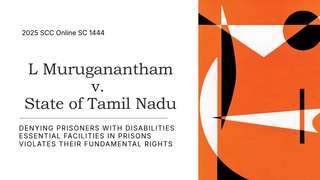Social Learning Theory under Criminal Law
Social Learning Theory [1]
Introduction
Social Learning Theory in Criminology is given by Ronald L Akers, along with Robert Burgess. It builds upon the broad psychological theory of same name by Albert Bandura. Akers has used Bandura’s theory in context of crime. Moreover, Akers also incorporated Sutherland’s Differential Association Theory. The theory argues that crime is a learned behaviour influenced by social interactions, beliefs, and the consequences of actions. It emphasizes the role of social interactions and the environment in shaping individual behaviour, particularly criminal behaviour.
Elements
This theory contains four main elements:[2]
1. Differential Associations:
This aspect focuses on the influence of peers and social networks in exposing individuals to criminal norms and behaviours. Prolonged association with deviant groups increases the likelihood of adopting their values. Mostly derived from Sutherland’s theory wit same name.
2. Definitions:
There are the attitudes and beliefs that individuals develop to rationalize or justify criminal acts. Favourable definitions towards law violation enhance the probability of committing crimes.
3. Differential Reinforcement:
The likelihood of repeating criminal behaviour depends on whether it is positively reinforced/rewarded or negatively punished. This concept refers to the idea that an individual’s past, present, and anticipated future rewards and punishments for actions explain crime.
4. Imitation:
Individuals tend to model their behaviour on influential figures, particularly when the behaviour is observed to have rewarding outcomes.
Application in Modern World
Cybercrime:
Social media platforms provide an avenue for differential association, where individuals are exposed to hackers and fraudsters who normalize illegal activities. Imitation plays a significant role as aspiring offenders replicate observed methods of cyberattacks.
Gang Culture:
Gang membership offers a bad environment for learning criminal behaviour through reinforcement mechanisms. Rewards like protection, financial gain, or social status perpetuate criminal activities within the group.
Substance Abuse:
It explains drug use through peer influence and reinforcement—friends or peers who condone drug use increase the likelihood of adoption. Rehabilitation efforts often target these social dynamics to break the cycle of reinforcement.
Limitations & Implications
Oversimplified
This theory oversimplifies the concept and assumes that all individuals are equal in learning criminal behaviour, and ignores innate capacity or traits. This goes against Sutherland’s Differential Association Theory.
Measurement Challenges
Quantifying concepts like definitions or imitation is subjective and complicates empirical testing.
Limited Scope
It may not adequately explain solitary crimes, such as insider trading or white-collar offenses, where social reinforcement is less apparent.
Rehabilitation Programs
Initiatives like cognitive behavioural therapy and group interventions focus on reshaping reinforcement patterns and definitions.
Preventive Approach
Programs like awareness and prevention incorporate principles to enforce reinforcement element.
Conclusion
Social Learning Theory is comprehensive framework for understanding group based crimes and deviant behaviours influenced by social contexts. Its integration of behavioural psychology provides a practical approach to crime prevention.
I believe that this theory has relevance to understand group behaviour due to its emphasis on social interactions and reinforcement mechanisms making it significant in addressing modern criminal challenges.
[1] Ronald L. Akers, Rational Choice, Deterrence, and Social Learning Theory in Criminology: The Path Not Taken, 81 J. CRIM. L. & CRIMINOLOGY 653 (Fall 1990).
[2] Dr Zachary Rowan & M. A. Michaela McGuire, 9.4 Social Learning Theory (2023), https://kpu.pressbooks.pub/introcrim/chapter/9-4-social-learning-theory/ (last visited Dec 30, 2024).


Comments